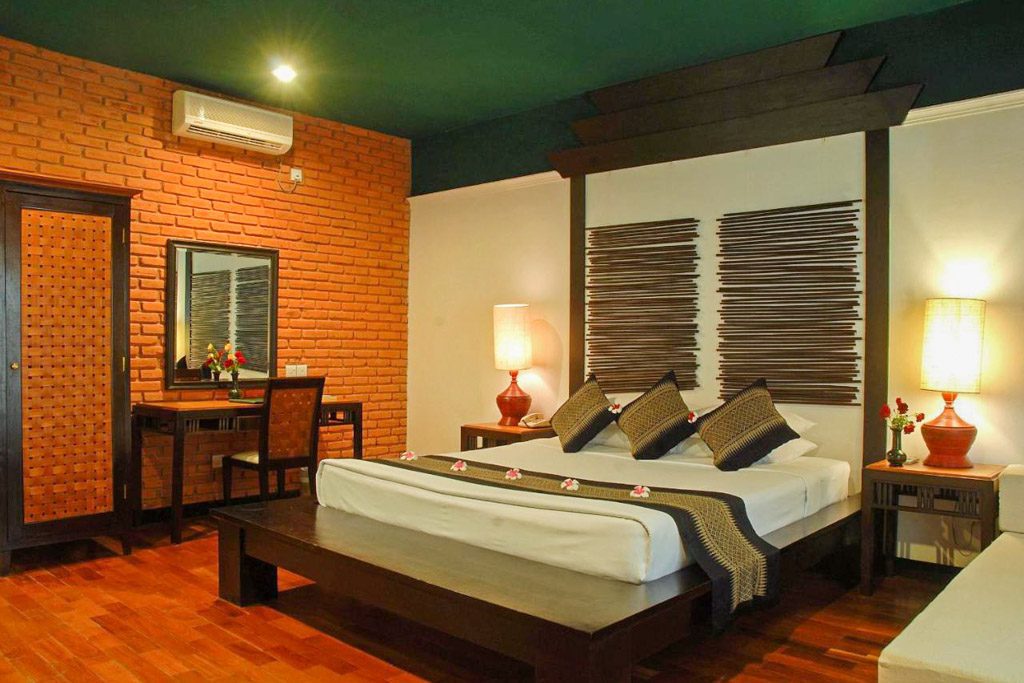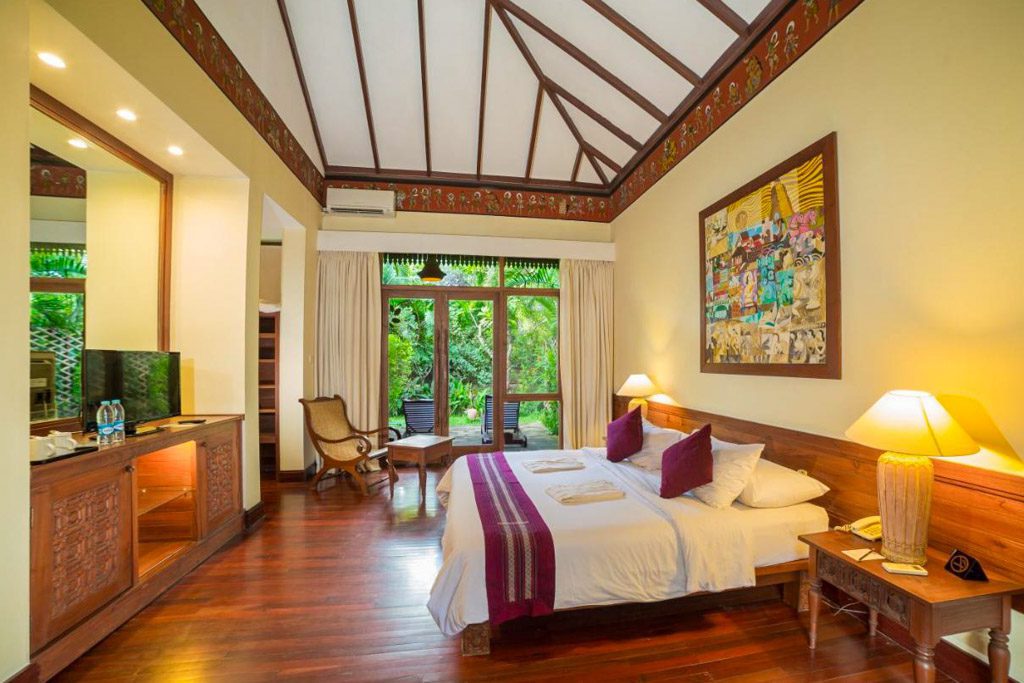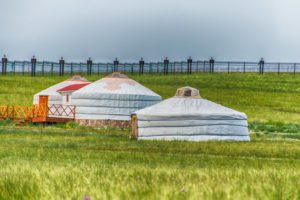Myanmar is one of my dream destinations, and the main reason I visited Myanmar was that I always wanted to see the fascinating archaeological sites in Old Bagan. One of the most picturesque plains a travel photographer could ever ask for. Over 2000 Temples, Pagodas, and Stupas stretch out as far as your sight goes and makes Bagan one of the unique must-see site in the world.
An old friend from Hpa-An was with me, so instead of planning every specific detail like I always do, I decided to leave it up to my friend and go with the flow.
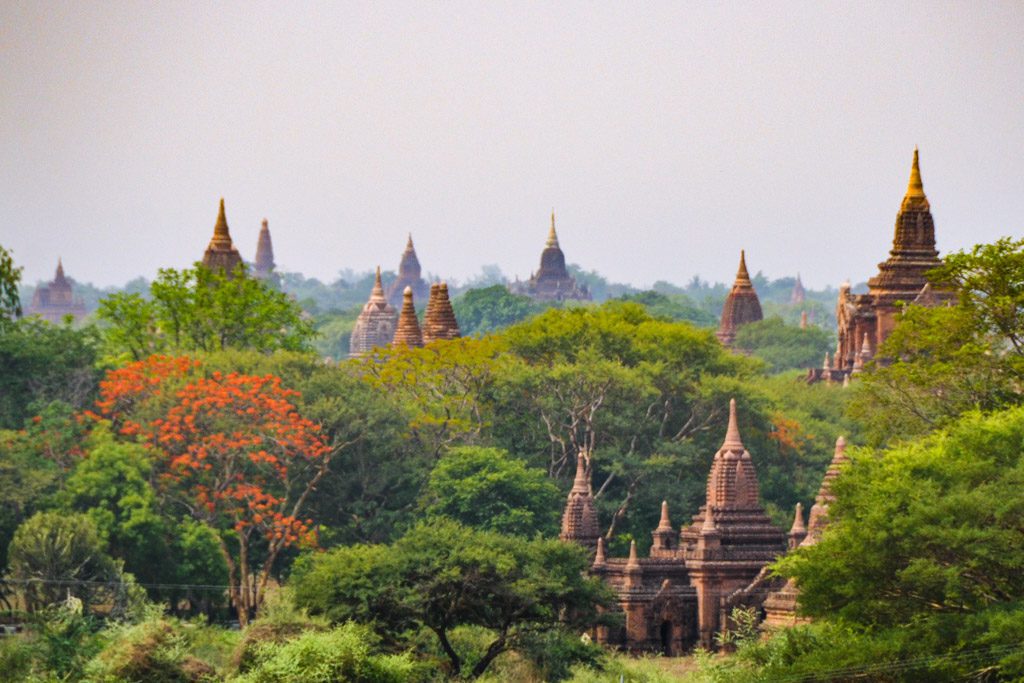
Temple Hopping in Bagan
In two full days, we covered many places by private car, and some of the sites were significantly remote. However, it was all possible because he knew his way around. Our driver knew his way around. Here are a few of the most famous ones of all.
First Stop Shwezigon Pagoda
Shwezigon was built as the most important reliquary shrine in Bagan, a center of prayer and reflection for the new Theravada faith King Anawarahta had established in Bagan. The pagoda stands between the village of Wetkyi-in and Nyaung U. It is a beautiful pagoda and was commenced by King Anawrahta but not completed until the reign of King Kyanzittha (1084-1113).
Note: Nowadays, a legend says that if one visits all four tooth replicas in a day, it can bring one prosperity and luck.
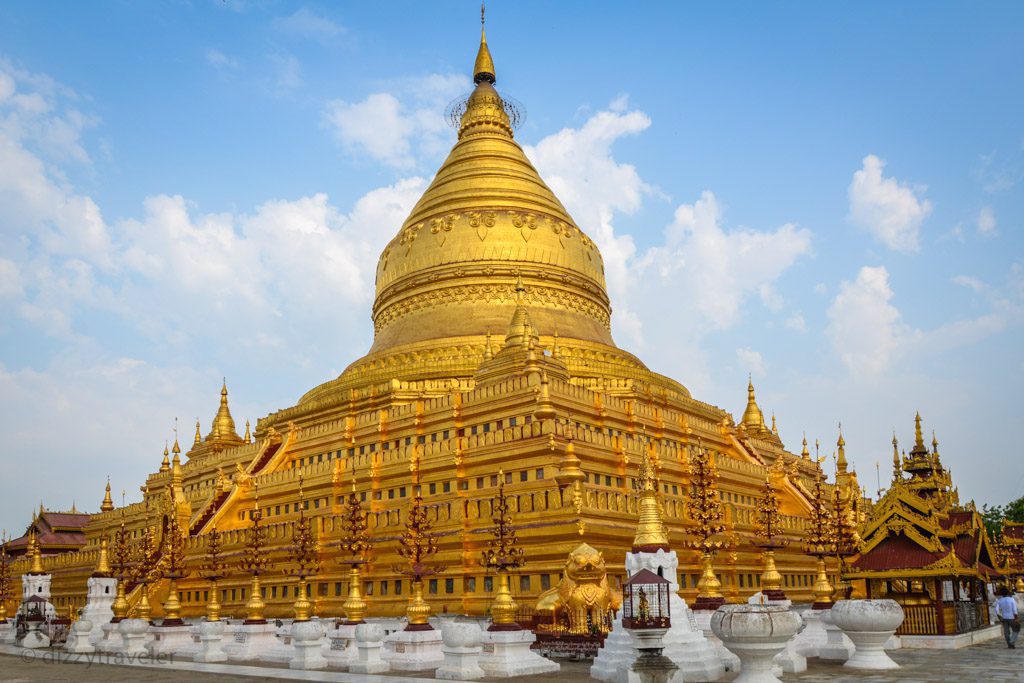
Next Visit Ahlodawpyae Temple
In between the new Bagan and the village of Bagan, you will find Ahlodawpyae pagoda. It still expresses traces of the Pyu culture, with the stupa placed on the superstructure, which preceded the arrival of Sakkara as in Nat Hlaung Kyaung, then in Nanpaya, the first temples of bricks, a temple which one thinks that the origins were one century earlier.
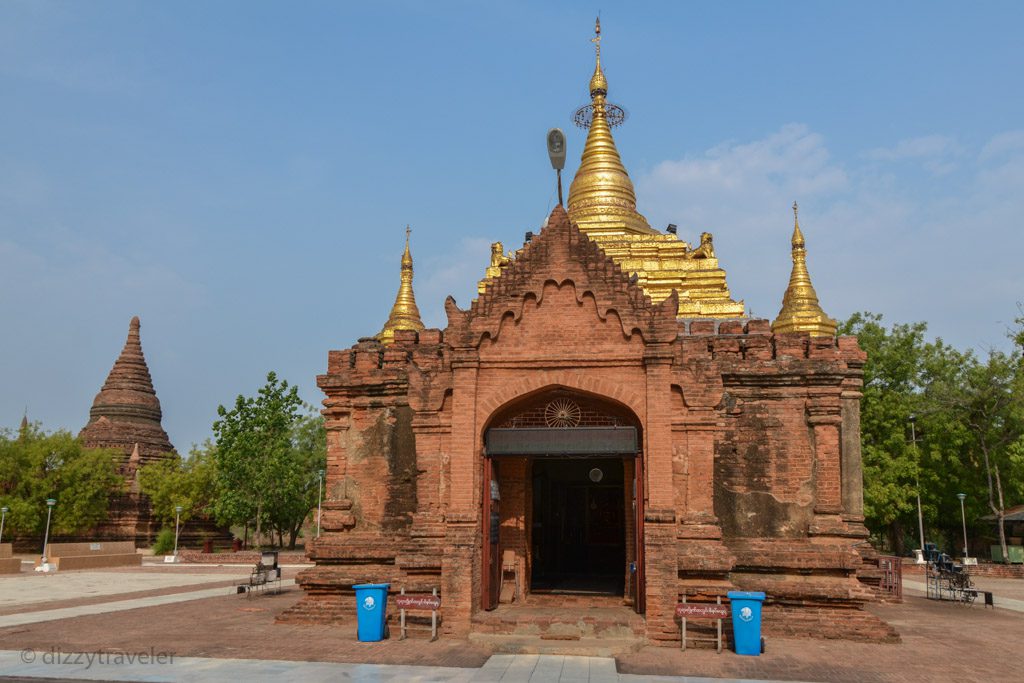
A Quick Stop at Abeyadana Temple
Abeyadana temple was built during A.D 1102-1103. The traditional architectural temple is located north of the royal place of King Kyanzittha.
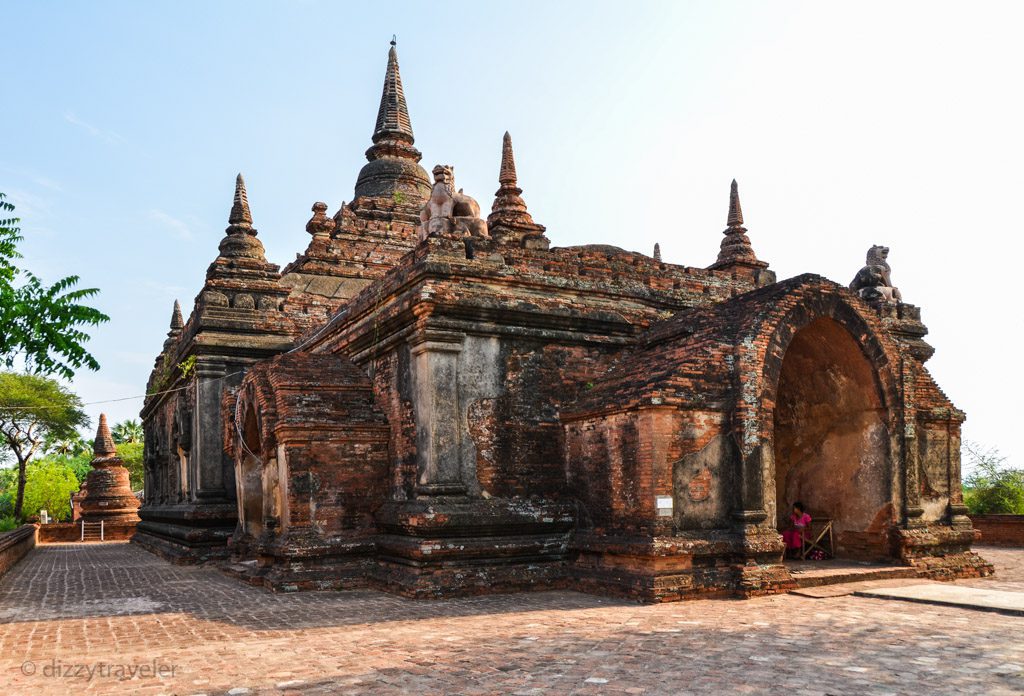
Next Htilominlo Guphaya
This temple is close to the road between Nyaung U and Bagan and about 1.5 km northeast of Bagan. King Nantaungmya built this large temple in 1218. The temple is known to be the last Myanmar Style temple built in Bagan. Nantaungmya was King Narapati Sithu’s son. The selection of the successor to the throne had a tradition: erecting a white umbrella, and the future ruler would be chosen when the white umbrella tilted in his position.
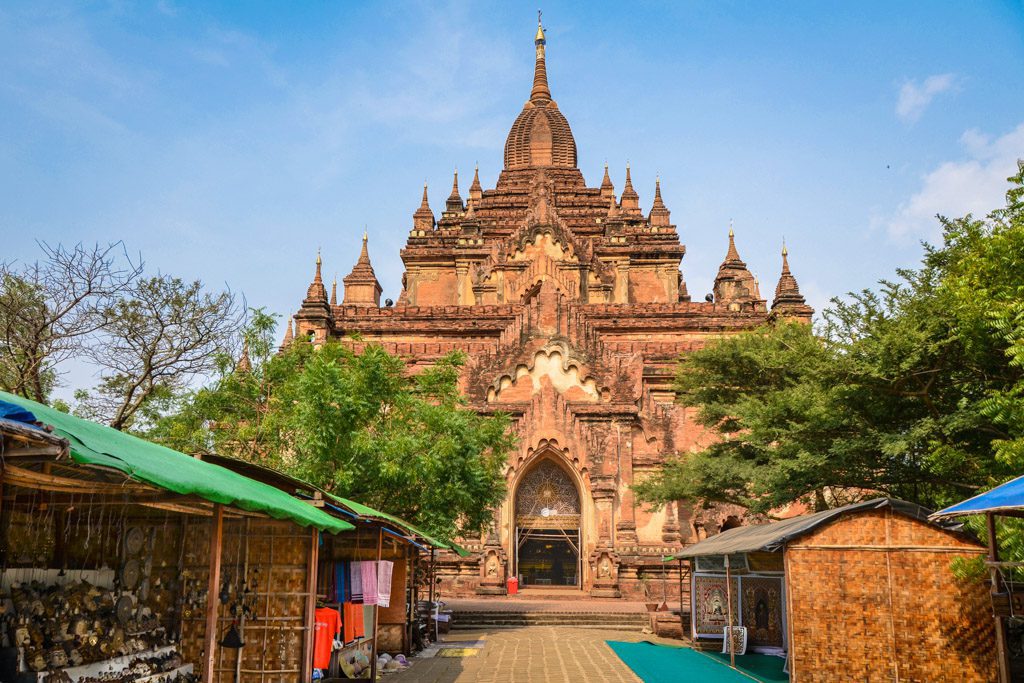
Ananda Phaya
Ananda temple is considered to be one of the most surviving masterpieces of Mon architecture. It is also known as the finest, largest, best preserved, and most revered of the Bagan temples. During the 1975 earthquake, Ananda suffered considerable damage but was restored.
It is said to have been built around 1105 by King Kyanzittha.
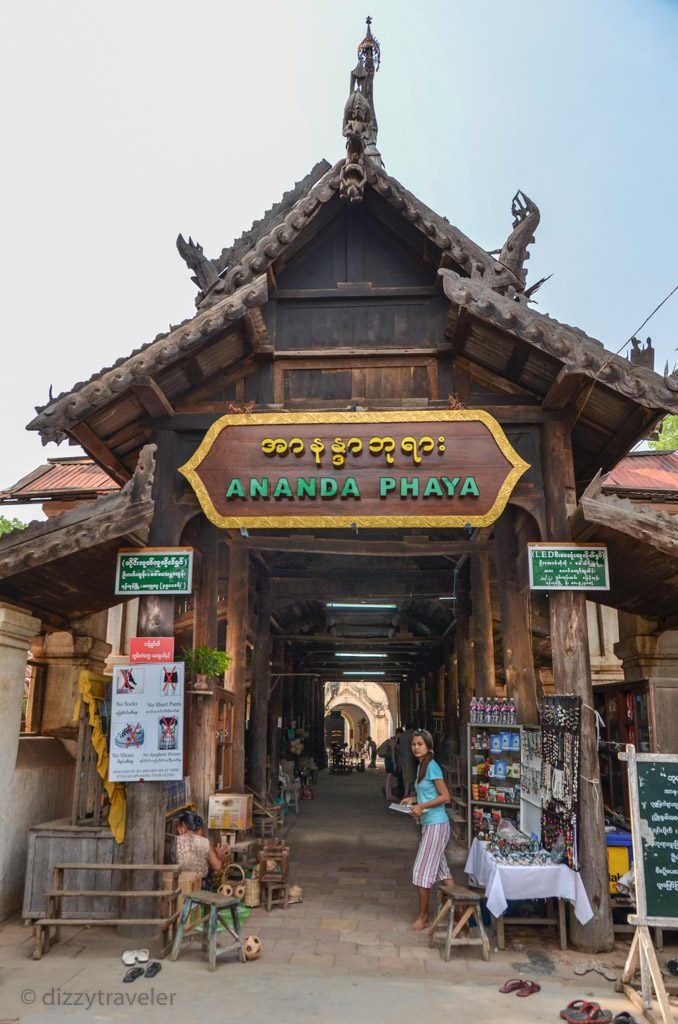
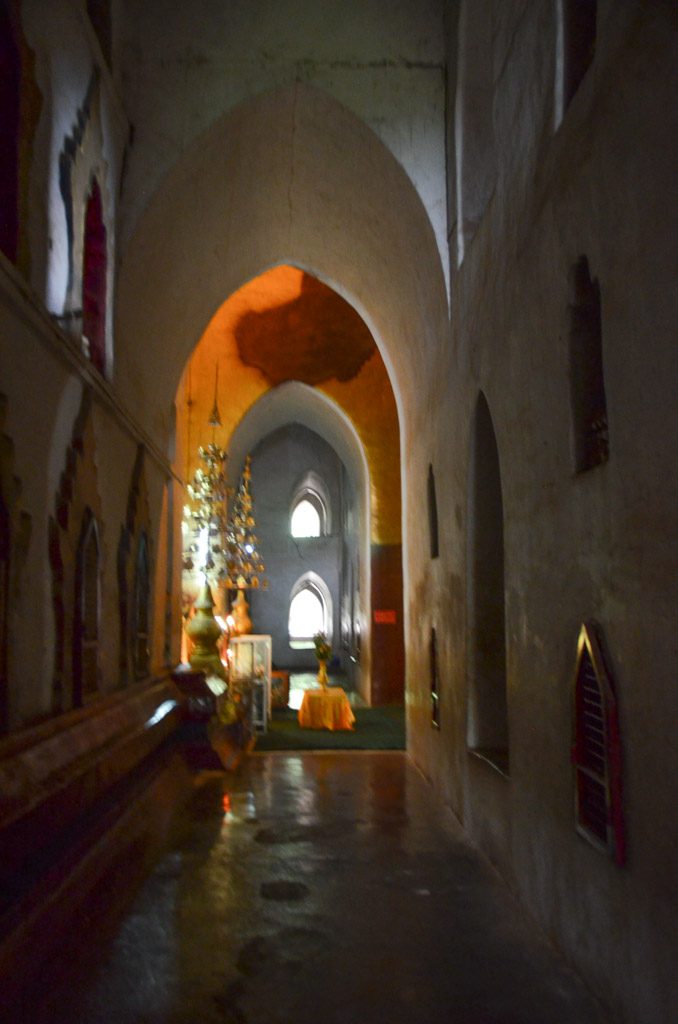
Thatbyinnyu Phaya
Built by King Alaungsithu (1113-1163), the Thatbyinnyu is a transitional temple. It is one of the earliest double-storeyed temples, but the arrangement differs from more recent double-storeyed temples.
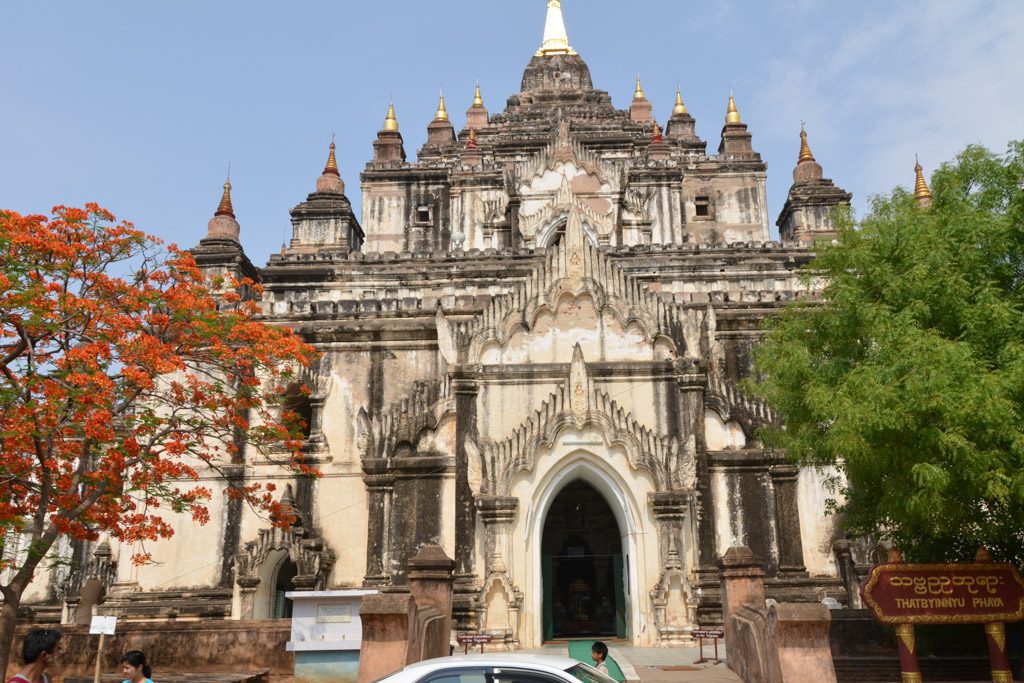
Bupaya Pagoda
Bupaya means “a gourd shape pagoda.” The legend says the third king of Bagan, Pyusawhti (AD 162-243), got rid of the gourd-like climbing plant “bu” that eroded the riverbanks before becoming the king. So, in celebrating his good luck, he built a gourd-shaped pagoda on the bank of the Ayeyarwaddy River. This cylindrical Pyu-style stupa is said to be the oldest in Bagan.
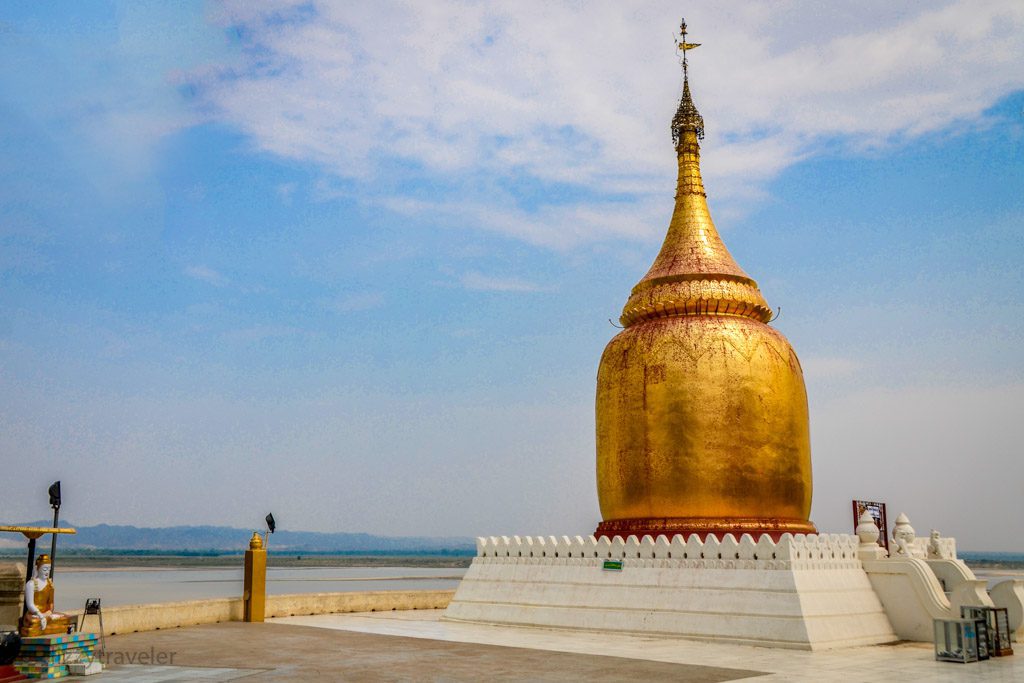
Gubyaukgyi Temple
Situated just to the left of the road as you enter Myinkaba, this temple was built in 1113 by Kyanzittha’s son Rajakumar, on his father’s death. Prince Rajakumar was the son of King Kyanzittha and the niece of a monk. Kyanzittha met the woman while he was a refugee before his time. So Rajakumar was the rightful successor to the throne of Bagan. But Kyanzittha had appointed his grandson, Alaungsithu, as successor, and Rajakumar lost his right.
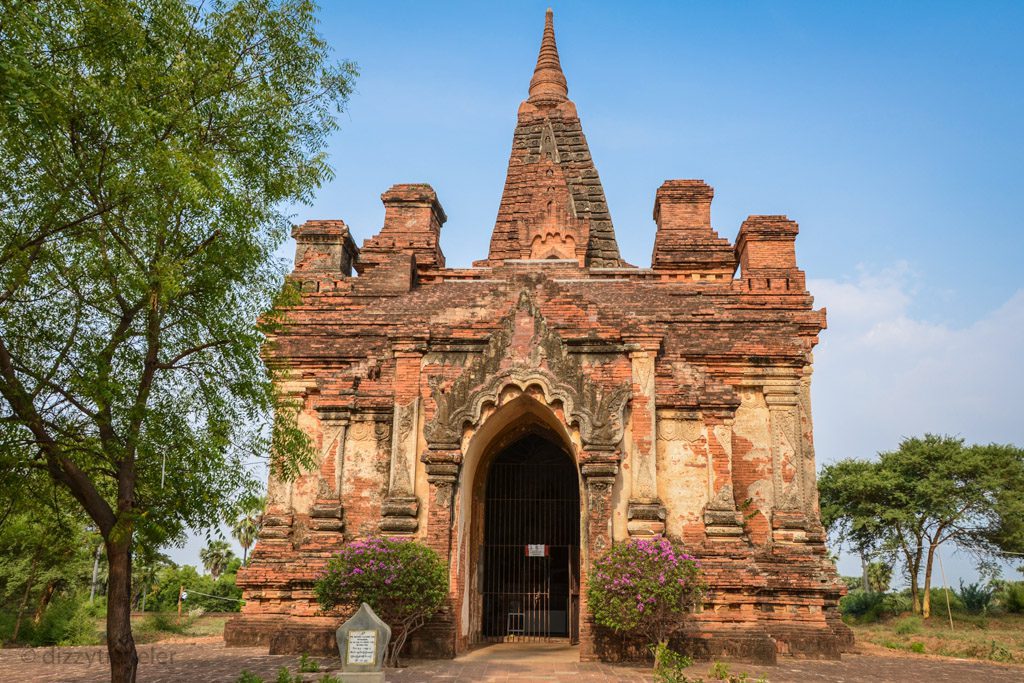
Phaya Thonzu Phaya
Payathonzu means “three pagodas” and is a complex of three interconnected shrines. It was abandoned shortly before its construction was complete, which could have been due to the invasion of the Mongols. Initially, this monument was built during the 13th century.
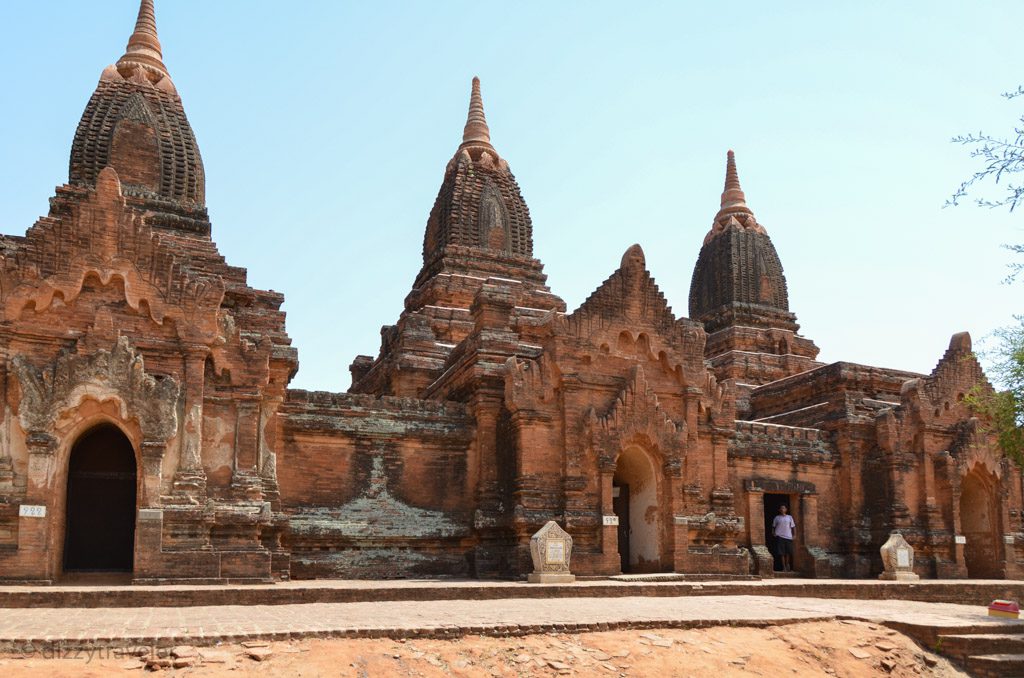
Leimyethna Temple
The Leimyethna temple, the “Temple of the Four Faces,” is a beautiful example of a single-storeyed temple built in 1223.
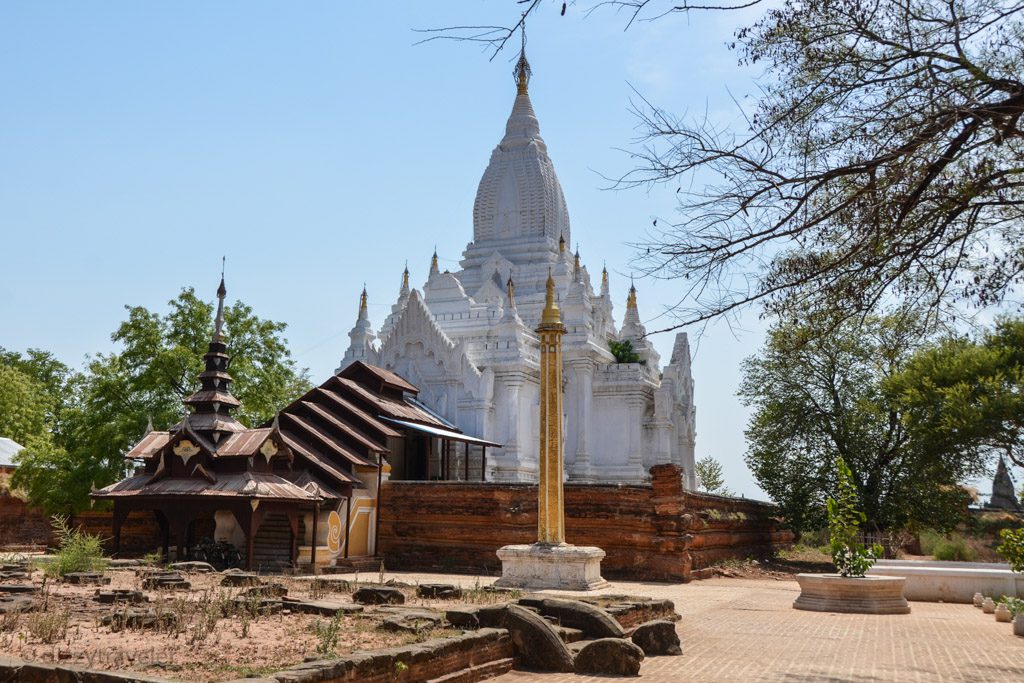
Dhamma Ya Zi Ka Pagoda
The name of the pagoda, Dhammayazika or Dhammarajika in Pali, means “Pertaining the King of Law. The structure of Dhammayazika Pagoda has pentagonal terraces instead of the usual Bagan pagodas, the square base.
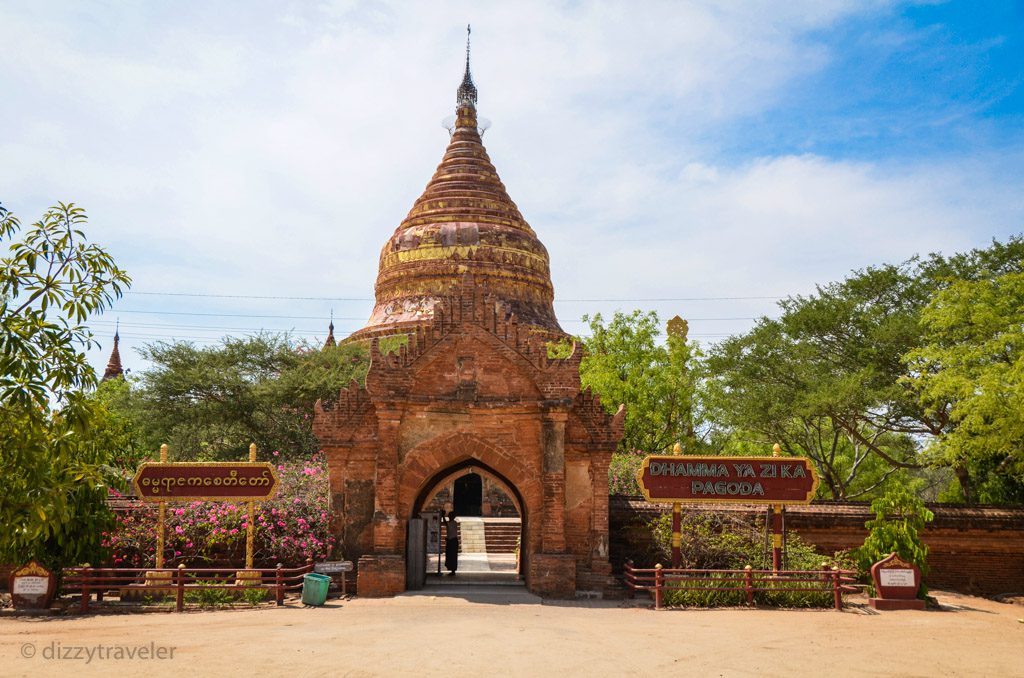
Manuha GuPhaya
The name “Manuha” was given after the Mon king from Thaton, who was held captive in Bagan by King Anawrahta. Legend says that Manuha was allowed to build this temple in 1059 and that he constructed it to represent his displeasure at captivity.
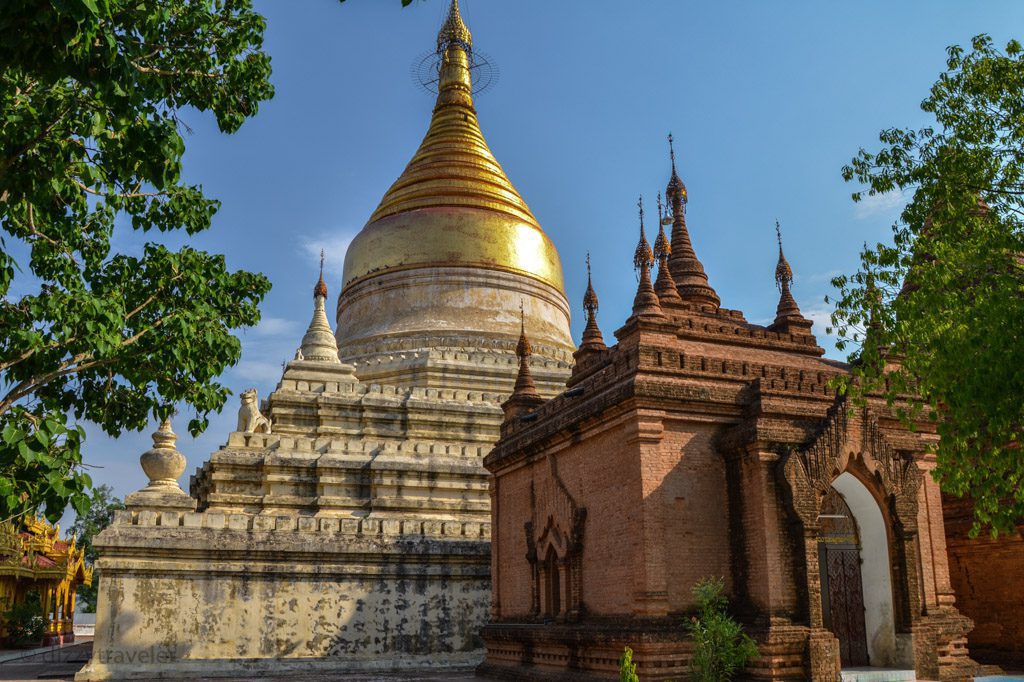
Dhammayangyi Temple
Dhammayangyi Temple is the most massive structure in Bagan, which has a similar architectural plan to Ananda Temple. It was built by King Narathu (1167-70). The temple is located about a kilometer southeast of the city walls directing Minnanthu.
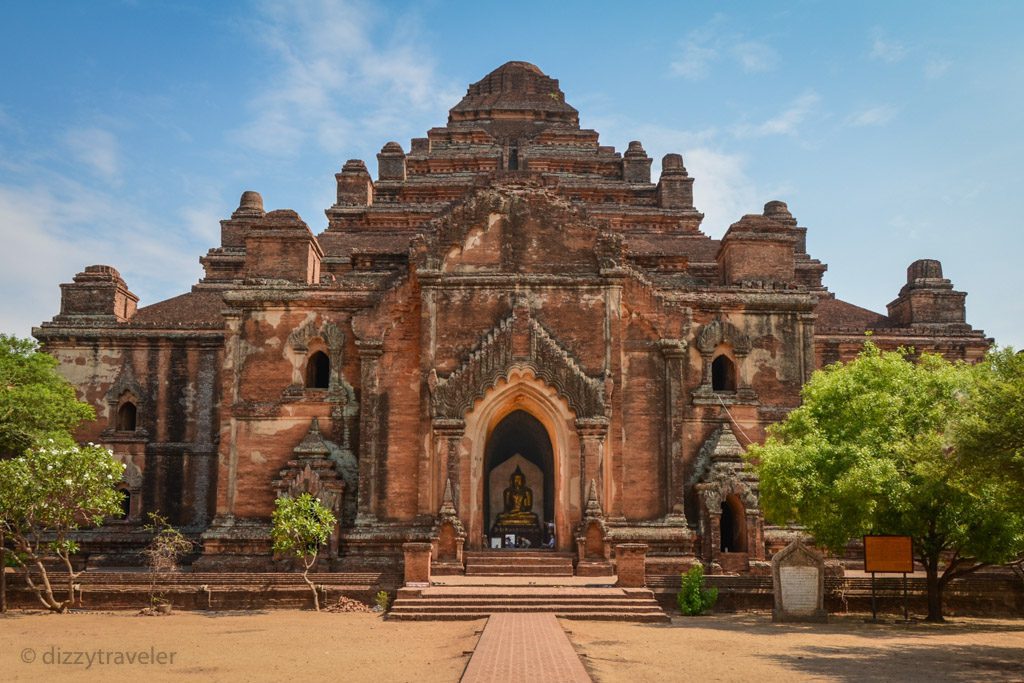
Sulamani Guphaya
Sulamani was built in 1181 by Narapatisithu (1174-1211). This temple was known as the “crowning jewel” and stood beyond Dhammayangyi Pagoda. This temple is a more sophisticated temple than the Htilominlo and Gawdawpalin.
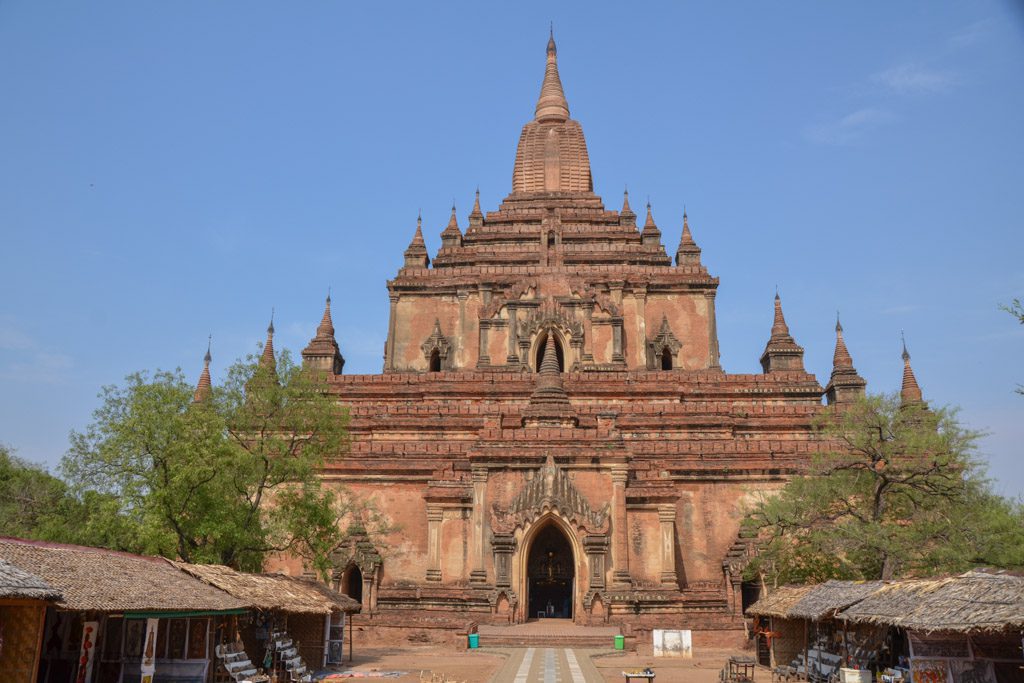
Gawdawpalin Phaya
King Narapatisithu built the Gawdawpalin Temple after building the Sulamani Temple. But later his son completed the construction. It is located about 3 miles south of the Bu Pagoda on the bank of the Ayeyarwaddy River. It is about 180 feet high, and the structure is typical of the Sulamani temple.

Myauk Guni Temple
Myauk Guni Temple is also located in Old Bagan. The Queen Pwasaw built it during the reign of King Narathihapate or the Tayoke Pye Min.Queen Pwasaw was a powerful Queen in Bagan history. A stone inscription was found inside the temple describing the Queen’s donation of the temple, land, and enslaved people. Also, there were curses to whoever destroyed the temple.
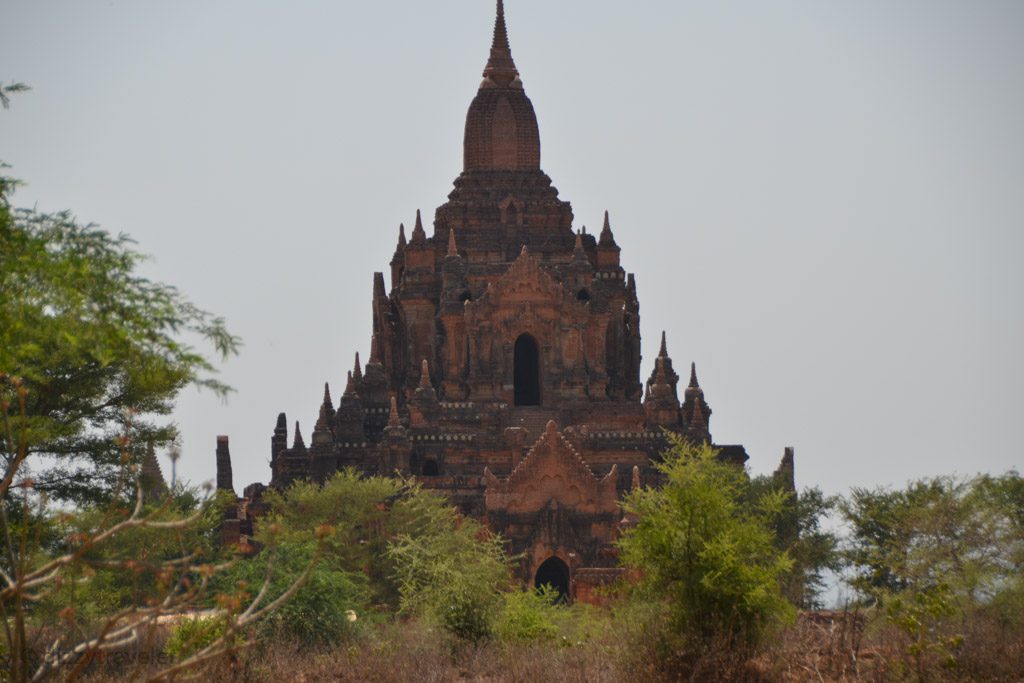
Mahabodhi Pagode
Mahabodhi Temple of Bagan was modeled after the famous Mahabodhi temple in Bodhgaya, Bihar State, India, during AD 500. It commemorates the spot where the Buddha attained enlightenment; King Nantaungmya built this monument between (1211-34). The pyramidal spire, covered in niches that enclose seated Buddha figures, rises from a square block. This monument is different from the common bell-figure pagoda ones in Bagan. The lower section of Bagan’s Mahabodhi is a quadrangular block supporting the pyramidal structure.
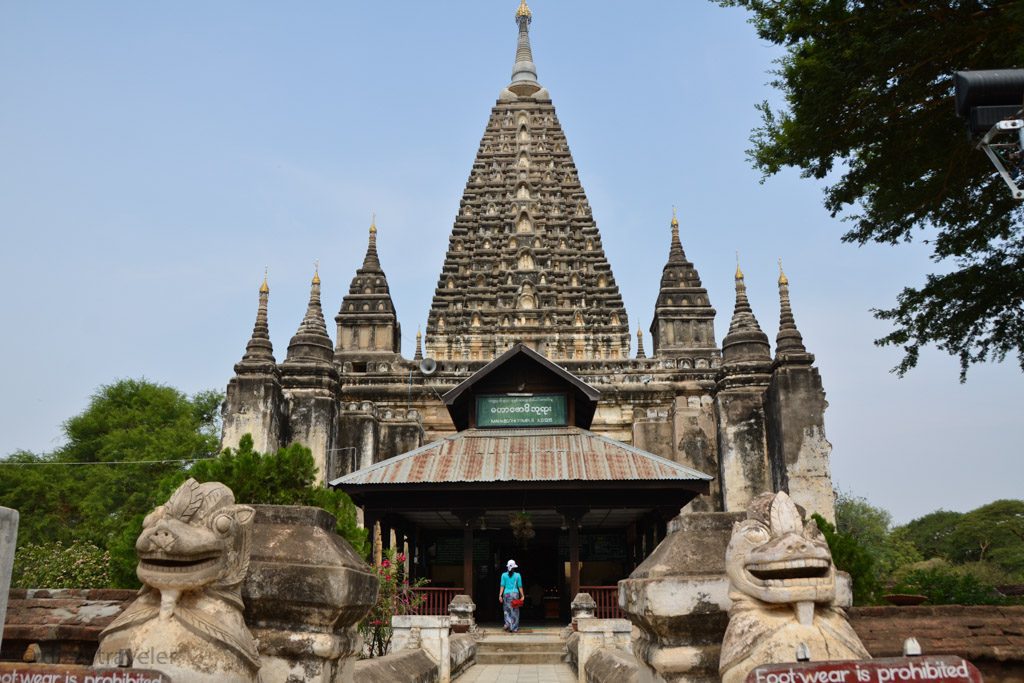
Shwegugyi Phaya
Shwegugyi means “the Golden Cave” in Myanmar, located in front of the royal palace. King Alaungsithu built it in 1140 A.D. A legend says that a huge block of brick about 12 feet high sprouted from the ground in response to the king’s greatness of accumulated merit. So the massive block of brick formed the plinth in the formation of the temple.
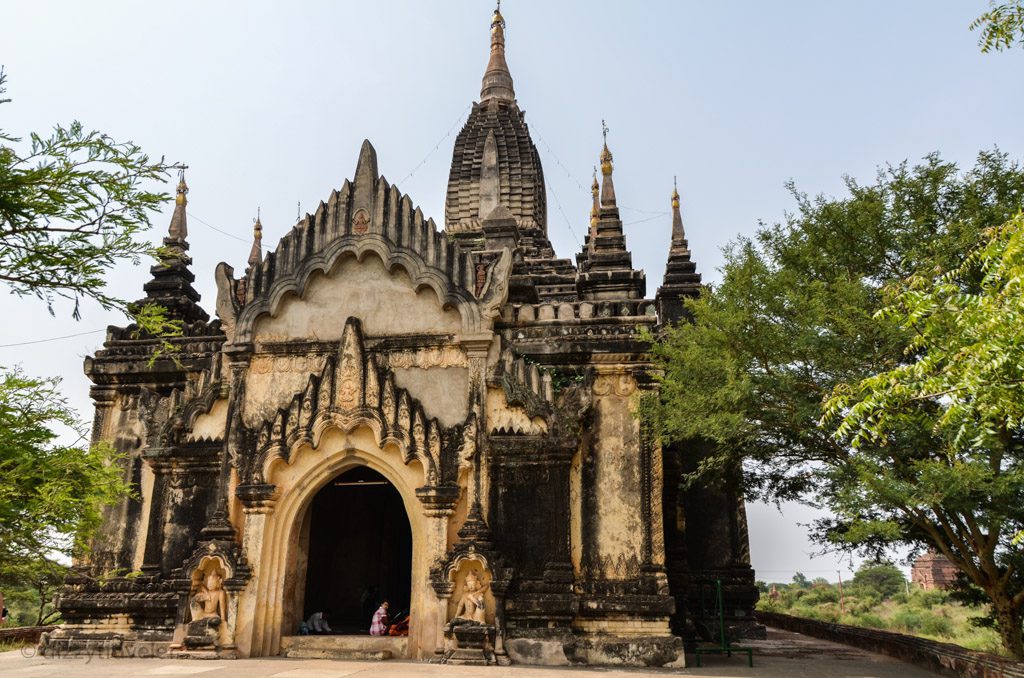
Mahazedi Pagoda
Maha Zedi Temple has a series of receding terraces, surmounted by a cylindrical or bell-shaped dome that continues into a final of concentric rings. The base of the temple is square in shape. The steps are very steep to climb up. But once you reach the terraces, you can view the beautiful scenes of Bagan with the ancient monuments.
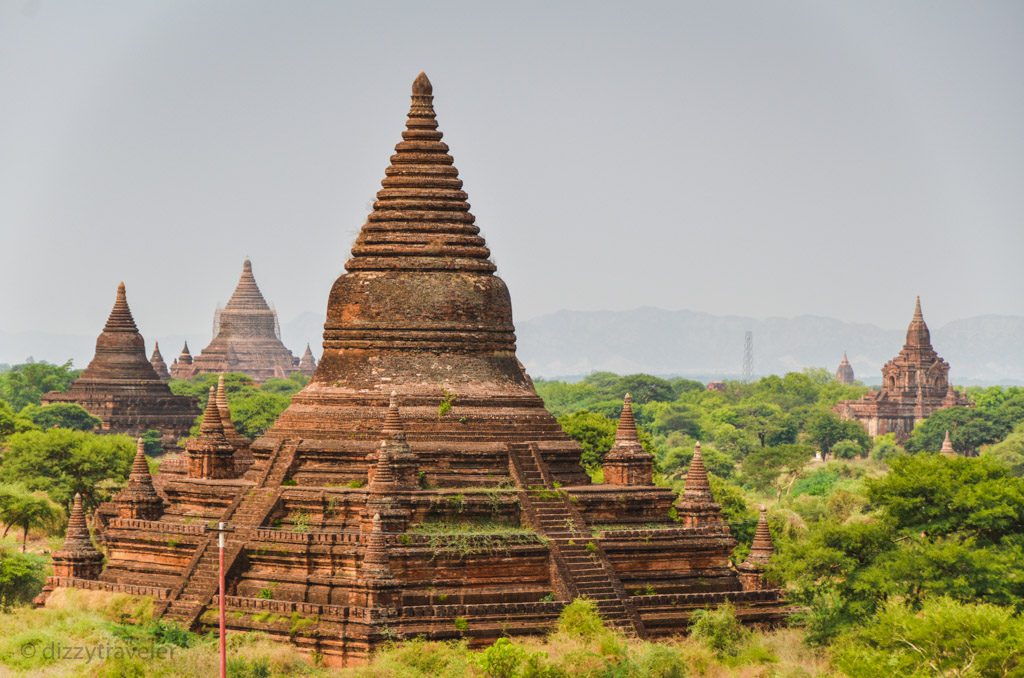
Lawkananda Pagoda
King Anawrahta built the Lawkananda pagoda during his reign in 1059 on the bank of the Ayeyarwaddy River. During those days, with the power of the Bagan Dynasty, the Mon region, Rakhine, and even as far as Sri Lankan would arrive by the Ayeyarwaddy riverside.
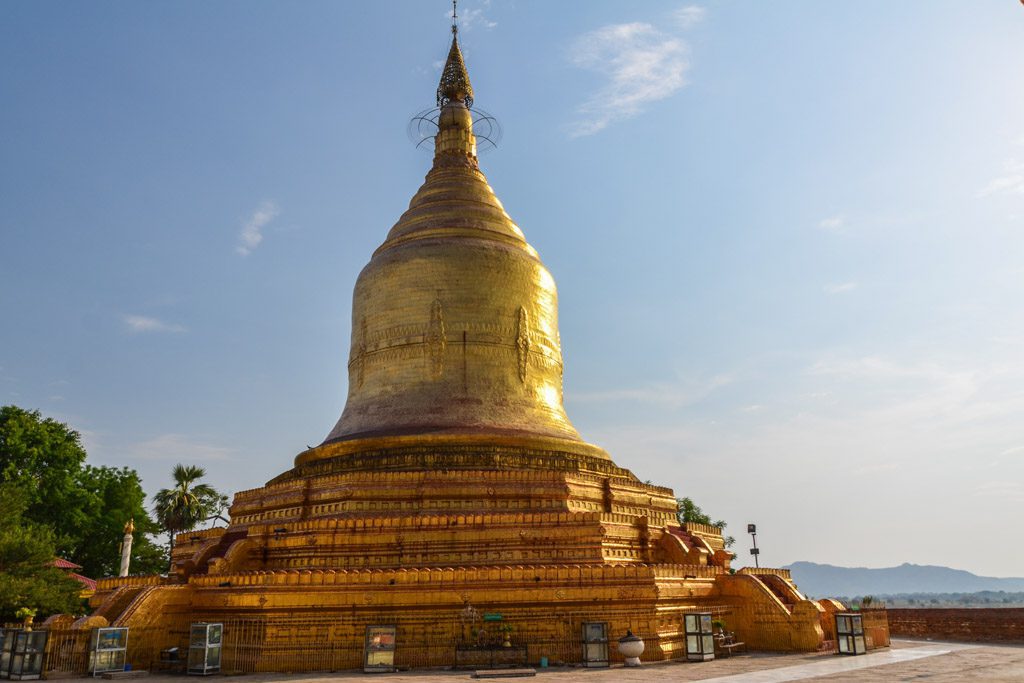
Nagayon Temple
King Kyanzittha built this temple with the name of “Nagayon,” meaning “sheltered by the serpent.” Nagayon Temple is where the legend says that Kyanzittha was sheltered by a reptile while fleeing from his angry brother and predecessor, Sawlu Min.
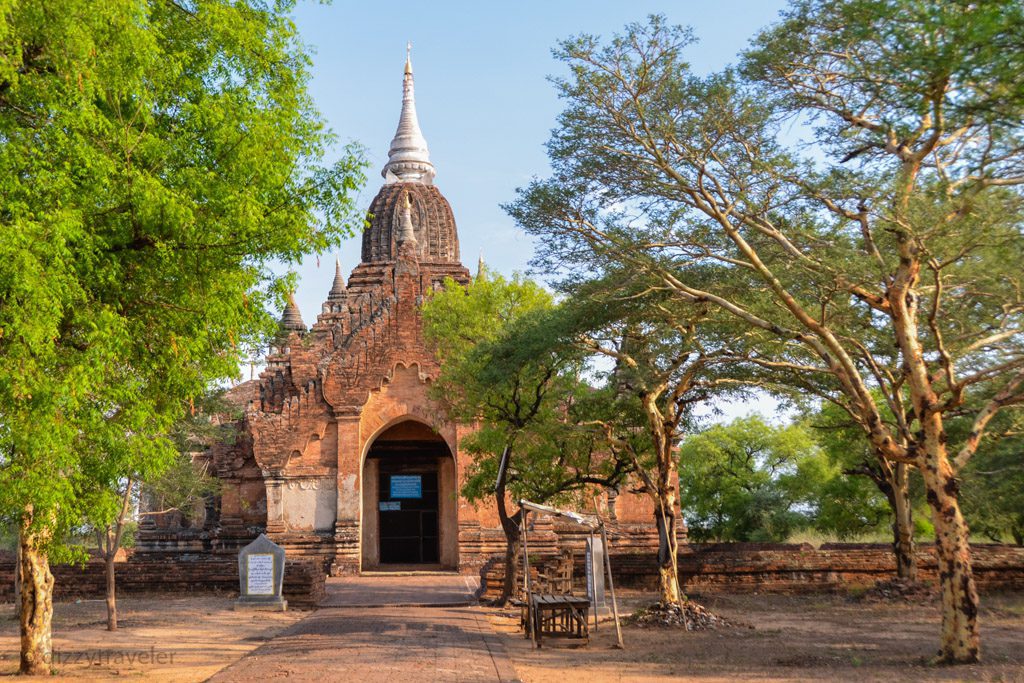
Shin Izza Gawna Temple
Shin Izza Gauna Temple is a two-story Indian based style monument. Izza Gauna was the name of an influential monk during the Bagan period who brought wealth to everyone in Bagan.
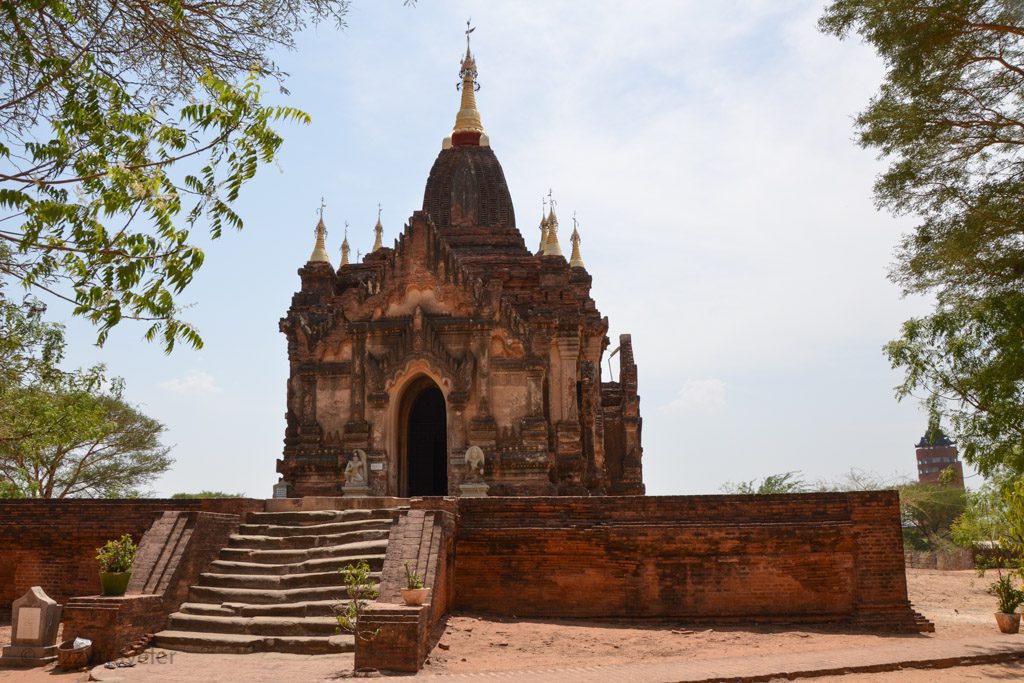
Winido Temple
Winido is a group of temples. Due to its location and difficult to get there this is a less visited site. However, some of these temples are interesting. Inside the Winido Temple are very remarkable paintings. These paintings are in the style of the late period of Bagan, decorative and delicate but also rather extravagant.
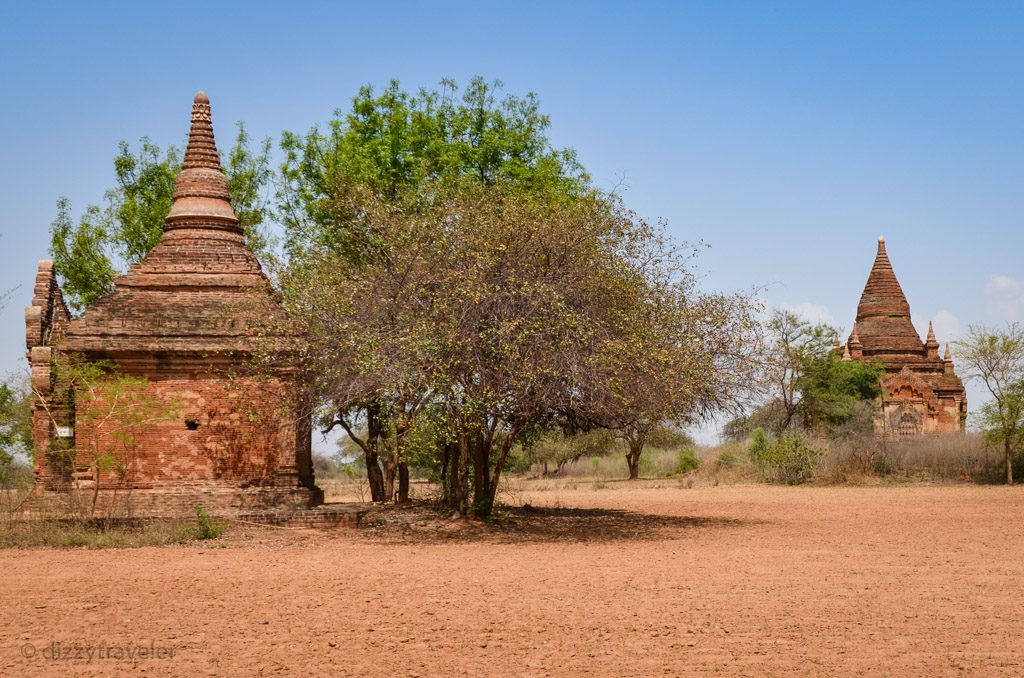
Mingalarzedi Pagoda
In 1277 Narathihapati built this stupa near the riverbank. It was the very last of the significant late-period monuments. It took six whole years to complete the construction of this great monument. The smaller square building in the zedi grounds is one of the few Tripitaka libraries made of brick.
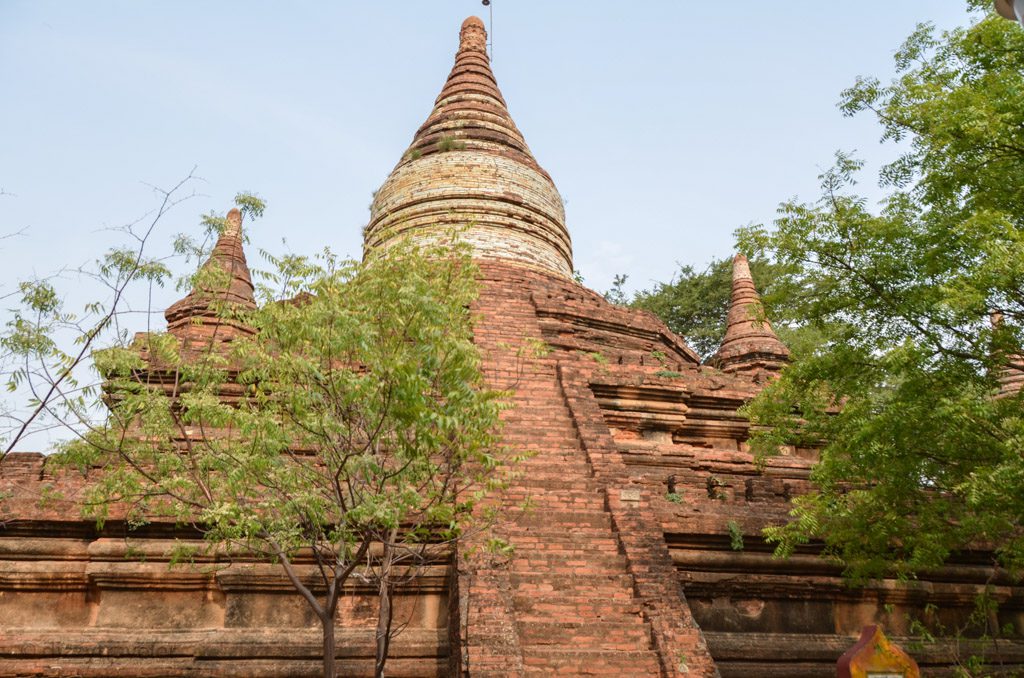
Book your Sightseeing Trip
There are a lot of beautiful places to visit and do some exciting sightseeing activities to bring unforgettable memories back home. Please click on our below affiliate link to see your options.

